Industry
Data as a strategic asset: a link to farm sustainability
We speak to Trev CEO Scott Townshend about farm data - why it’s important, how we can use it more effectively and what the gains are from a productivity, profitability and environmental standpoint.

“Whether it’s grass growth, body condition score, or recording fertiliser applications, New Zealand farms are entering an age of data that offers a golden opportunity to help boost farm performance, lift profitability and improve sustainability”
- Scott Townshend
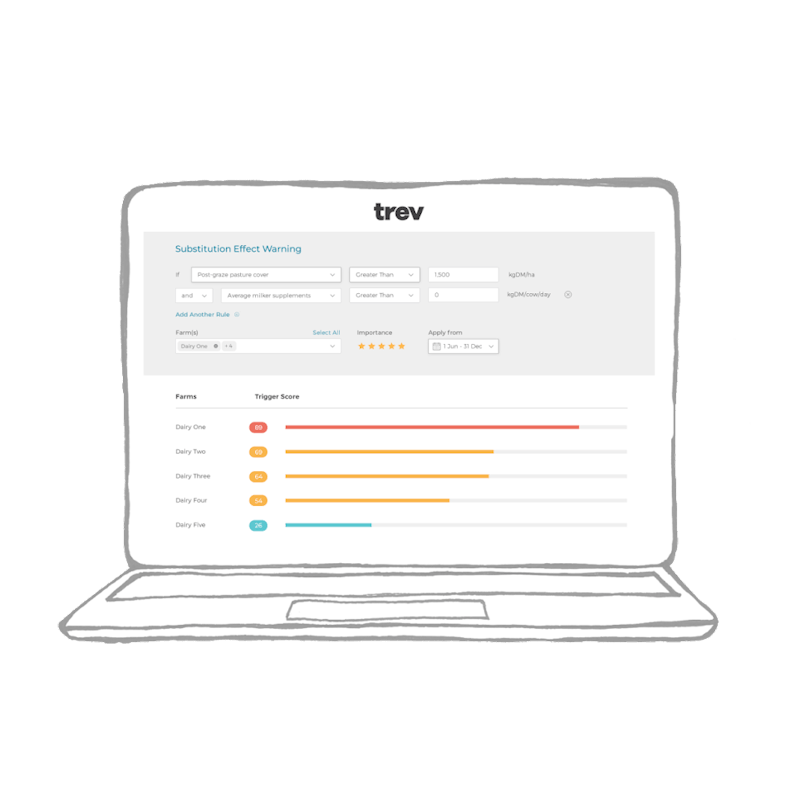
Q: Why should we be looking harder at the on-farm data we can collect?
A: Every farmer instinctively understands the old adage “you can only manage what you measure”, and as more data points appear on today’s farm, the need to channel more, measure more and understand more has never been greater.
The ability to record information has evolved with technology so what we’re seeing now is that data is available in a lot of different places. This is great as it minimises the effort to record information, but it can also prove problematic when discrepancies arise and more time is required scrutinising on-farm records to make sure the data collected is true. Only with accurate records can we begin to create and interpret insights that are meaningful and valuable to a farming business.
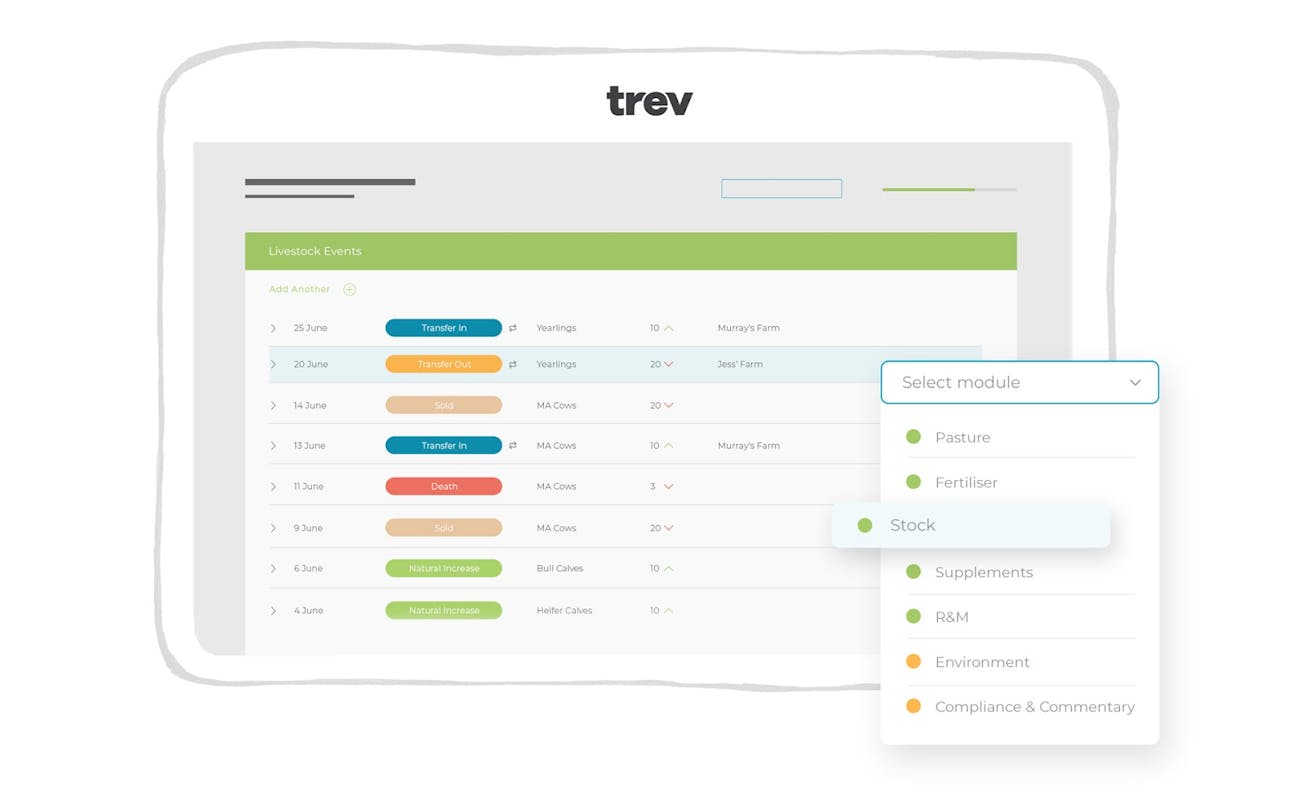
Q: No two farms are the same, everyone’s information needs are different, so how can software like Trev deliver my data in a form that’s useful to me and to my farm business?
A: Trev has been developed for the needs of time-poor, production focused farmers who also appreciate the need to better understand their farm’s sustainability objectives, and meet inevitable compliance demands.
Putting farmers in the middle of Trev’s design and having a flexible, simple, reporting system means input only needs to be done once. A key Trev KPI is that it takes no more than 10 minutes a week to capture all the data vital to knowing how the farm is performing, including pasture production, animal output, feeding levels and maintenance tasks.
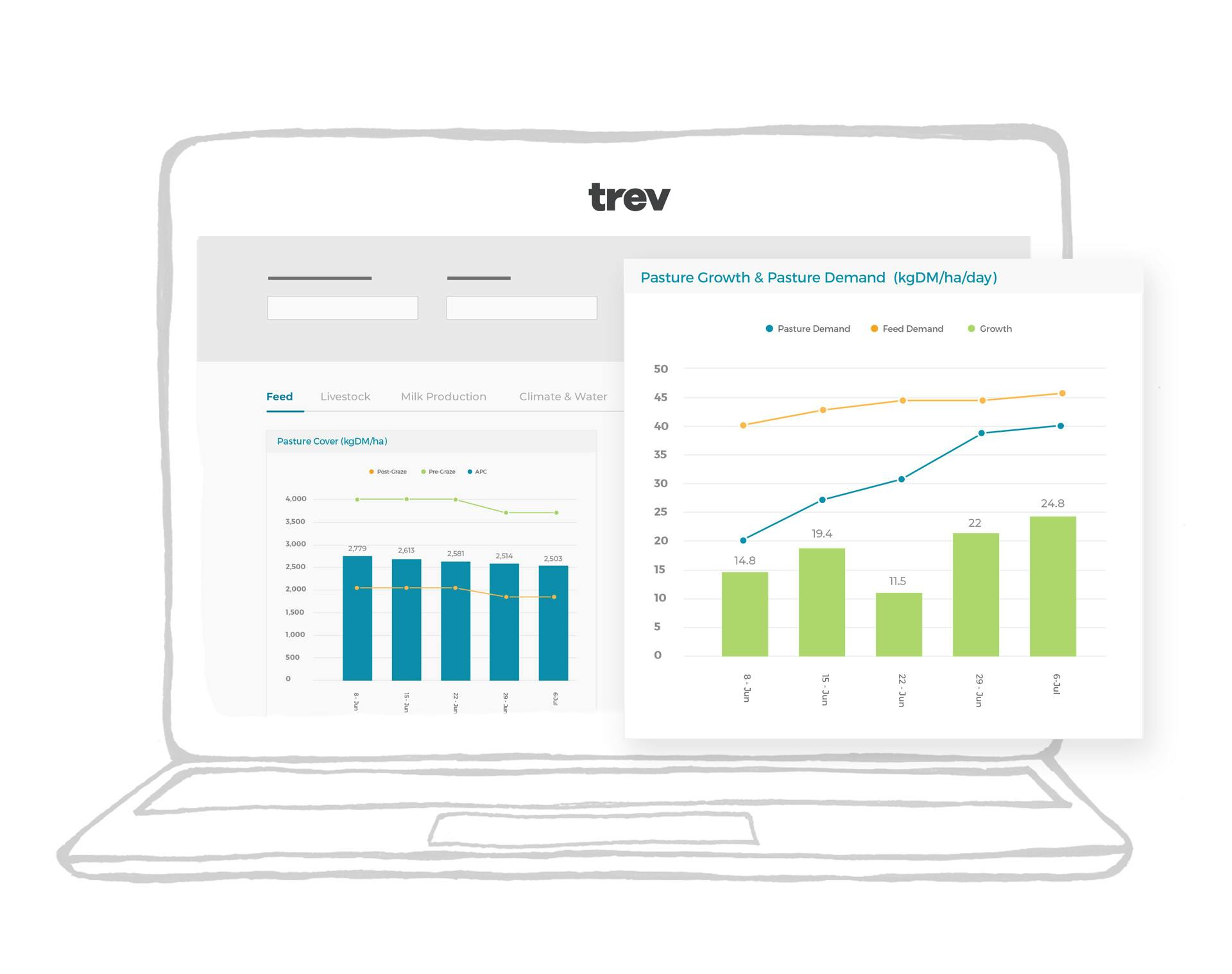
Q: Is there a risk that we will just become inundated with so much data we can’t interpret it all?
A: First and foremost, if interpreted by the right system, data can help provide faster, more informed insights to farm productivity (or identify areas of potential weakness) and act as a platform of knowledge to help with future improvements.
A good system will also ensure meeting compliance needs becomes a far less onerous task, one that is complementary to performance and production, not the sole driver for their creation.
With Trev we’ve focused a lot of energy into converting raw data (whether created natively within Trev or integrated from one of our data partners) into standardised, familiar KPIs and that’s what we put in front of our farmers to allow them to get straight to the info they’re looking for to support quality decision making.
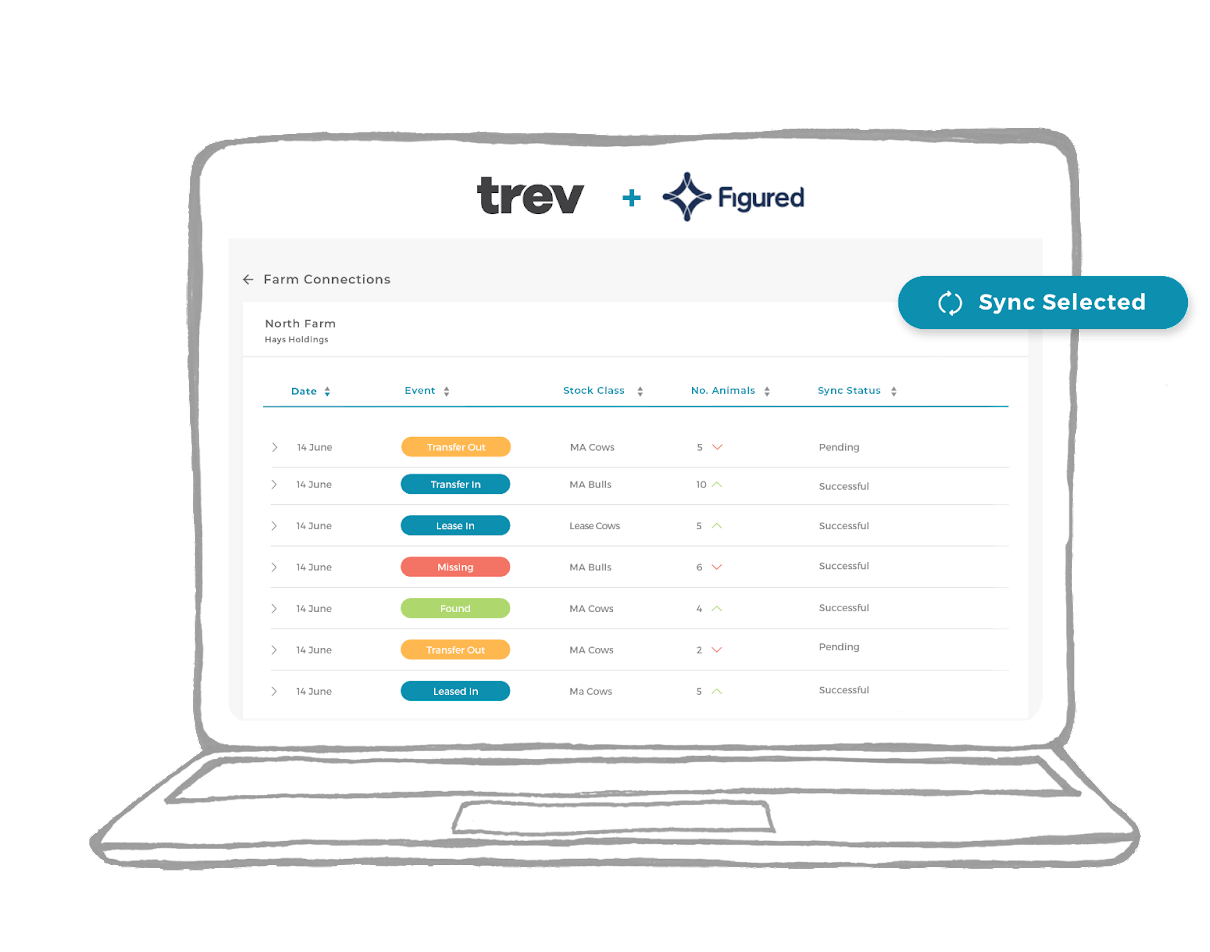
Q: Is there a risk the reports I read are based on data that has been entered incorrectly, making the reports wrong, or misleading?
A: Trev’s scrutiny ensures multiple parties can input or verify farm data from multiple sources, secure in the knowledge any erroneous data will be detected, and either snuffed out at the point of entry, or subsequent attention is alerted by Trev.
Ruthlessly vetting the quality of what goes in is critical to ensuring that what comes out is suitable for robust analysis or decision making.
Trev’s simple feedback loop ensures that if and when farmers choose to pass their data on to third parties (whether for nutrient budgeting, accounting, or reporting) they can have confidence the data is sound.
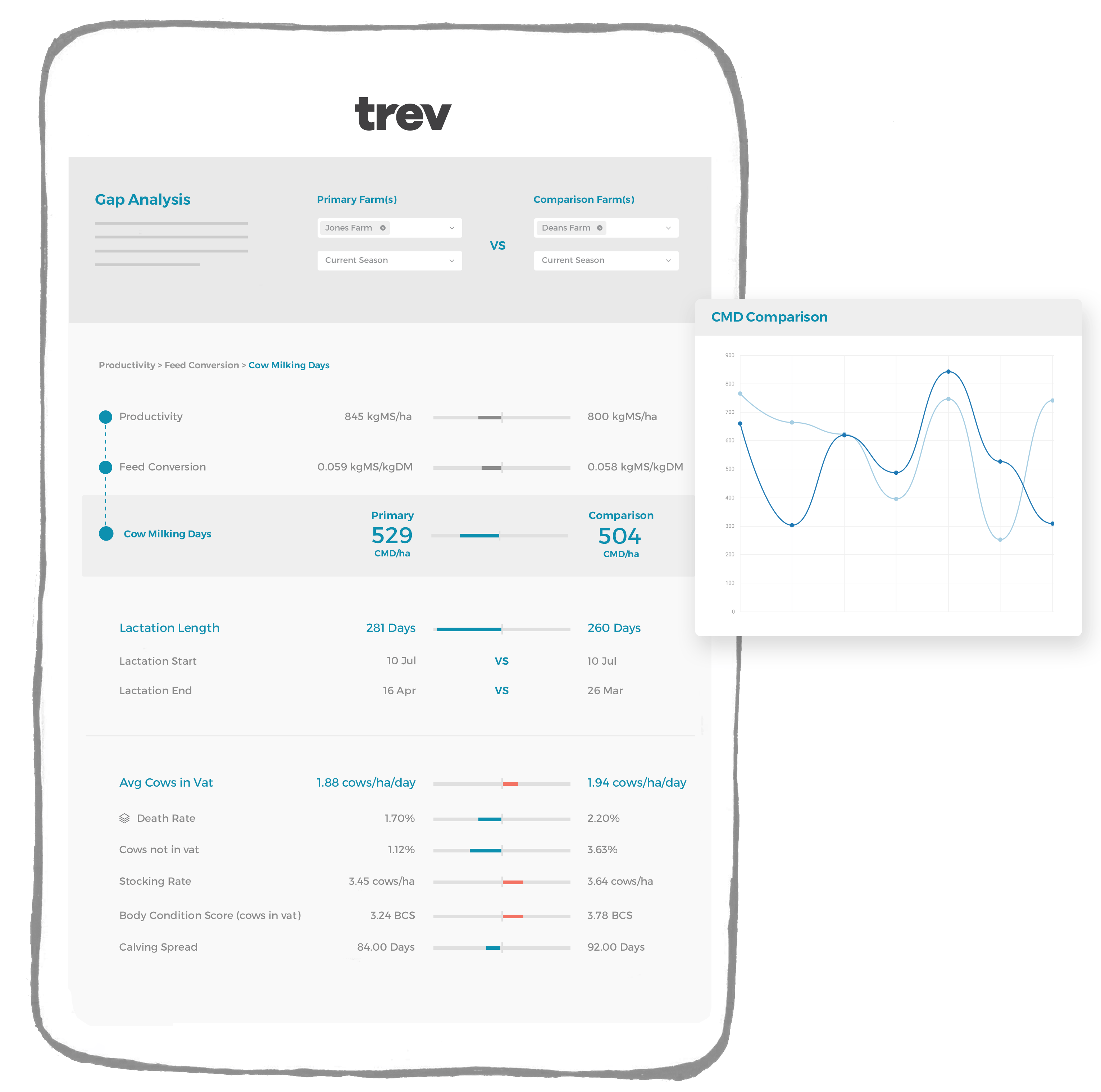
Q: Farm production can be influenced by multiple factors, how can data be used to understand which are the ones impacting on my farm business?
A: Really good question. The process of taking a range of data points across the wider farm system, analysing them in conjunction with one another and spitting them out in a meaningful way is something I think we’ve all battled with as farmers.
With Trev, we’ve set about automating some of these insights through what we refer to as Trev’s “gap analysis” tool so we can constantly review the farm system with ease. There are multiple factors which influence a farm’s profitability and sustainability, by using Trev’s gap analysis tool users can identify what it is that may be causing a gap in performance between one farm and another. For example, gap analysis might demonstrate the ability for adjacent farms, allowing for known differences in management practice, to deduce the influence of nitrogen application or stocking rate on overall productivity. A key point of difference for Trev is that this is determined from data on real, commercial farms rather than relying on potentially obscure research farms or hefty modelled assumptions.
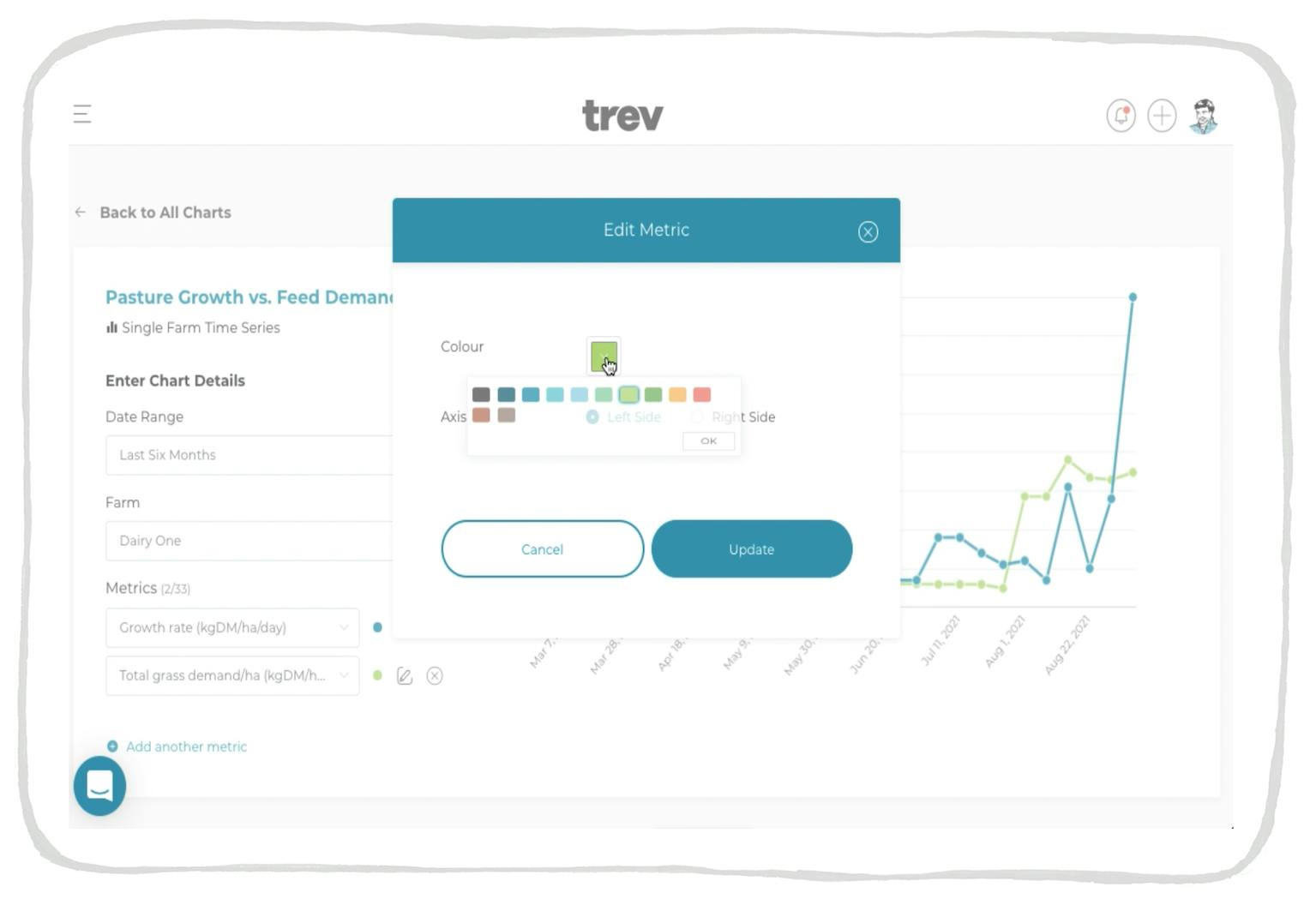
Q: Is it possible to hone in on individual aspects of my farm’s performance, whether financial, productive or environmental?
A: Trev has the capability to build customised charts for the farm’s key resource inputs and production outcomes. The reports also mean the farm’s sustainability and environmental footprint can also be better understood.
For example, seeing nutrient application and pasture production plotted together on the same chart provides a simple insight to farms where nutrient loss may be a problem, where soil performance is not what it should be, or where action could be taken to ensure the right fertiliser is put in the right place at the right time. Trev’s ability to incorporate environmental rules such as nitrogen limits can also help alert any up-coming overruns on those limits.
“First and foremost, Trev means a farm’s data can be used to lift productivity, in doing so ensuring that data accuracy is spot on, while insights to sustainability become a welcome additional outcome.”
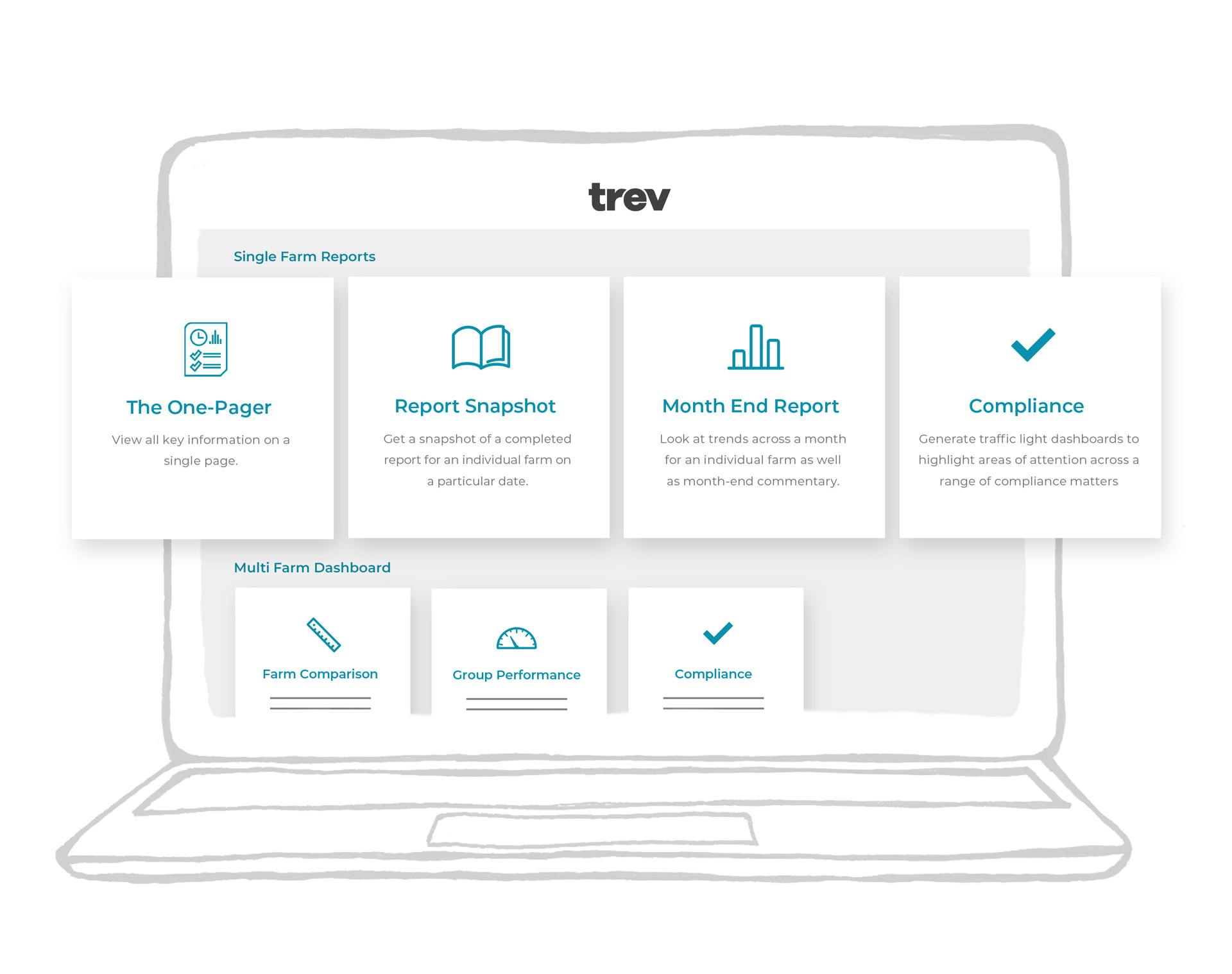
Q: Does the data I collect hold any value other than to me?
More and more processors are expecting farmers to be capable of providing information such as environmental and animal health data to meet consumer expectations in order to command premiums for the food products they produce.
Trev’s ability to offer tailored reports meet that need, without farmers relinquishing control of their data and the format they can view it in or it becoming a meaningless box ticking exercise.
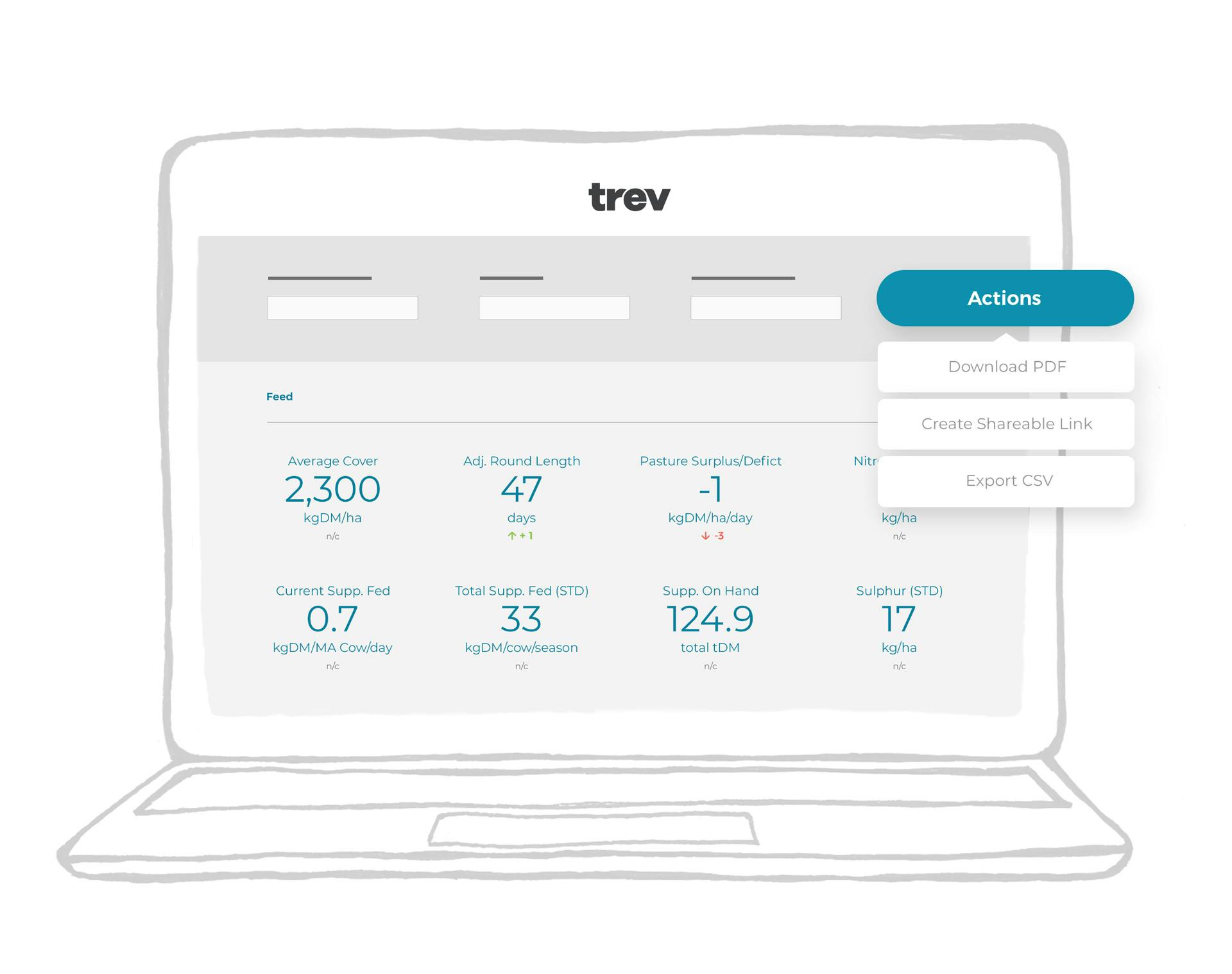
Q: If my data is collected, doesn’t that mean it will be used against me as a ‘stick’ for compliance?
A: New Zealand has strict standards on how data can be shared, and with who. Because data has been collected does not necessarily mean it has to be shared. However with the right setup there’s a real opportunity to turn the compliance ‘stick’ into an incentive ‘carrot’, putting farmers in the box seat to determine what data is collected, how it's used, and in what form (if any) it can be passed on.
Trev customers have ultimate control over who can view and use their data. We’re seeing more of our farms record data through sustainability indicators such as animal body condition or events such as effluent maintenance records. This allows businesses to not only demonstrate productivity improvements, but also create a positive track record around compliance too.
More articles
Customers
Trev delivers for early adopters
Dairy Direct provides hands on supervisory services for large dairy operators. Having Trev’s data open and available across all properties is critical for a service that steps beyond straight consultancy, with expectations on following up on recommendations, often reviewing staff actions within a day or so.
Industry
Media Release: Agritech companies jump fence in powerful industry union
Announcing an industry union that promises to bring another level of insight and depth to the Trev product suite, building on our vision to be New Zealand’s favourite farm reporting and insights platform. Trev has acquired Cloud Farmer, one of the pioneers of farm recording in New Zealand.
Industry
Top 5 KPIs: Steve Atkinson
Steve and Trish farm 2600 cows across 4 different operations in the Waikato. They run a contract milking system which extends to a farming team of 15. Steve says "our team are the ones that bring our farming system to life so while we have our non-negotiables on farm, our people are just as important. "